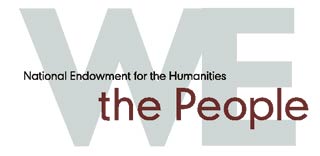The Formation of the Committees of Correspondence
Introduction
Throughout the 1760s and 1770s, Americans engage in colonial politics in a variety of ways. Newspapers report and comment upon the proceedings of local town meetings, colonial legislatures, and Parliament. Pamphlets and broadsides rail against unpopular government policies, while community groups such as the Sons of Liberty plot resistance strategies and organize public protest events. Believing that ignorance is slavery, patriot leaders in Boston continually experiment with new forms of political instruction, hoping to encourage residents to become active, or at least more informed colonial citizens.
In the fall of 1772, Bostonians address the latest rumors from Parliament: judges of the Superior Court of Judicature will no longer be paid by the colony's General Court. Instead, judges will be paid directly from the royal treasury, using money collected by the American Board of Customs Commissioners. Fearing this new process will "pervert the judgment of men," Bostonians petition their selectmen to act. In the process of debating the matter, Samuel Adams proposes the creation of a corresponding society to gauge the sentiments of other Massachusetts towns. On 2 November 1772, a committee is born when the Boston selectmen vote to establish a twenty-one-member Committee of Correspondence.
The Committee's first assignment is to prepare a series of reports outlining colonists' rights and Parliament's infringements upon those rights. The reports are gathered into a single document that becomes known as the Boston Pamphlet. Copies of the pamphlet are distributed to every town in Massachusetts, and town leaders across the colony debate the wisdom of following in Boston's footsteps.
Many towns do eventually appoint their own committees of correspondence, a development that troubles governor Thomas Hutchinson. As advocates of the committee system boast that Bostonians (and their committee) will prove to be the "saviors of America," Hutchinson and his opponents take every opportunity to disparage the town's Committee of Correspondence.
More positive news arrives from the "patriotic province of Virginia" in the spring of 1773. The House of Burgesses proposes some enhancements to Boston's committee of correspondence idea. In response to Virginia's proposal, Massachusetts creates a colony-level committee of correspondence chaired by Samuel Adams. The rhetoric of freedom, rights, and liberty bandied about by politicians is soon adopted by other colonists struggling with issues of slavery. In one poignant broadside, four slaves petition the Massachusetts General Court, hoping that the "divine spirit of freedom" will extend to the thousands of men and women literally enslaved in the colonies.
By the summer of 1773, the committees of correspondence have yet another issue to debate and discuss. In May, Parliament passes the Tea Act, giving the East India Company a monopoly over the sale of tea in the colonies. Committees are quick to share their thoughts on this "impending evil," but will their vitriol be enough to stop the tea from coming?
Rowe's Revolution
"Town Meeting, the Hall so full they adjournd to the Old South Meeting - the Debates were for & against the Committee of Correspondence very warm on both sides, it lasted all day & adjournd until tomorrow 10 of Clock."
Diary of John Rowe,
27 June 1774









![Published circular letter, Boston, April 20th, 1773. Sir, The efforts made by the legislative [sic] of this province... (Boston, 1773)](/database/images/bostonapril20th_1_th.jpg)


